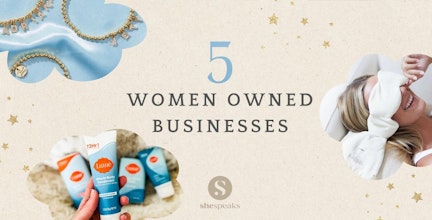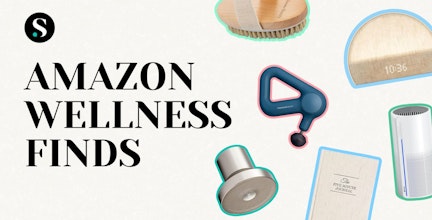Is Water Enough for Your Workout?
0

I recently completed the most difficult physical thing I’ve ever done—climbing Mount Kilimanjaro. Though I’ve run multiple marathons and half-marathons, the length, intensity, and sheer physical demand of the six-day climb, especially the final eight-hour ascent that began at midnight, had me seriously regretting not booking my summer vacation to a Hawaiian beach. In between trying every mental tactic I could think of to keep one foot stepping in front of the other, I realized about halfway up that my guide was galloping up the mountain ahead of me. Singing. As I stopped multiple times to guzzle my electrolyte-enhanced drink, special workout gels, and high-energy fitness bars, he simply sat and waited—no fancy foods, not even a pack of water.
Have we been tricked into thinking all these tools are necessary? In an attempt to find out if I’d been totally duped by the workout industry, I decided to give my fitness goodies a closer look.
Sports Drinks
University of Florida doctors created the first sports drink in the ’60s to give a little edge to the school football team (the Gators) over the heat and humidity. Gatorade hydrated players with water, with carbohydrates for energy, and with electrolytes like sodium, magnesium, calcium, and potassium for optimal muscle and nerve performance. Today grocery stores have a bevy of sports beverages in multitudes of colors and flavors, and all claim to be bursting with ingredients that will do wonders for my workout. I’m still skeptical. Sure, elite athletes in muggy Florida need an extra edge, but what about your everyday woman who likes to go on morning runs and take Pilates classes at the gym?
University of Florida doctors created the first sports drink in the ’60s to give a little edge to the school football team (the Gators) over the heat and humidity. Gatorade hydrated players with water, with carbohydrates for energy, and with electrolytes like sodium, magnesium, calcium, and potassium for optimal muscle and nerve performance. Today grocery stores have a bevy of sports beverages in multitudes of colors and flavors, and all claim to be bursting with ingredients that will do wonders for my workout. I’m still skeptical. Sure, elite athletes in muggy Florida need an extra edge, but what about your everyday woman who likes to go on morning runs and take Pilates classes at the gym?
“Electrolyte drinks replenish lost minerals and fluid in the right amount, so you don’t get an upset stomach from having too much, or crashing from having too little,” says Jenny Geyser, a San Diego-based certified personal trainer.
Sports drink formulas have a specific concentration of carbs, usually between 4 and 8 percent. Fruit juice and soda have far more, which causes those awkward mid-workout digestive problems.
When we need it: One thing a fitness drink will do is keep us hydrated. A study published in Medicine & Science found that we tend to drink 25 to 90 percent more liquid if it comes from a sports drink over plain old H20. It also showed that athletes hydrating with a drink containing electrolytes and carbs run faster and longer, have better motor skills, and are mentally sharper. That’s because during an intense workout we sweat, losing water and minerals. (That’s why sweat is salty.) These drinks replenish not only our fluid levels, but also the lost electrolytes quicker than our bodies can, and in the right proportions, too.
When we don’t: If the closest you are to a workout is the distance between your couch and the football on your TV, don’t kid yourself.
“These drinks may have half the calories and sugar of juice or soda, but that’s still extra calories and sugar that you’re not burning off,” says Geyser. She recommends drinking water if you’re not doing a really sweat-inducing workout. And what about those low-calorie and no-calorie versions of these drinks? Many of them don’t even have the same carbohydrate/electrolyte combination that their higher calorie counterparts do, and some light flavoring and vitamins aren’t going to do anything to make you run faster. They’re just going to cost you more.
Fitness Bars
Flip the average bar over and it’s quite possible that there’s as much fat, protein, and sugar as some candy bars have. That said, the right kind of fitness bar can give the body necessary nutrients and energy pre- or post-workout, especially if we’re in a hurry and the only other option is a handful of M&Ms from the office snack bowl. The trick is differentiating between the helpful and the harmful. (Hint: If it’s coated in peanut butter and chocolate, and it tastes like a peanut butter, chocolate cookie, it probably has the calorie and fat count of a peanut butter, chocolate cookie.)
Flip the average bar over and it’s quite possible that there’s as much fat, protein, and sugar as some candy bars have. That said, the right kind of fitness bar can give the body necessary nutrients and energy pre- or post-workout, especially if we’re in a hurry and the only other option is a handful of M&Ms from the office snack bowl. The trick is differentiating between the helpful and the harmful. (Hint: If it’s coated in peanut butter and chocolate, and it tastes like a peanut butter, chocolate cookie, it probably has the calorie and fat count of a peanut butter, chocolate cookie.)
When we need it: A well-balanced bar—without sugary or highly-processed additions—can be a powerful pre-workout energy boost or post-workout replenisher. This means avoiding ingredients like partially hydrogenated oils, high fructose corn syrup, and artificial dyes, and opting for ones that are as close to whole foods as possible—the fewer ingredients, the better. “Food is fuel,” says Geyser. It’s important to fuel our bodies with protein and fiber, and, if we’re in a hurry, a healthy bar can be an effective way to do this.
When we don’t: Scarfing down high-energy bars during a workout of less than two hours is one of the top ten most common diet mistakes, says the American Council on Exercise. Why? Think of high-energy as a nice euphemism for high-calorie. I’m all for the high-calorie, quick energy boost, but from now on I’ll be opting for something a little lighter after evening Pilates.
Gel Packs
After Lance Armstrong finished his first marathon in 2006, runners buzzed about the above average amount of PowerBar Gels he guzzled during the 26.2 miles. Personally, I’m never sure what the difference is between too few and too many. More importantly, is there some magic ingredient in them, or would an everyday (ahem, cheaper) on-the-run snack have the same effect?
After Lance Armstrong finished his first marathon in 2006, runners buzzed about the above average amount of PowerBar Gels he guzzled during the 26.2 miles. Personally, I’m never sure what the difference is between too few and too many. More importantly, is there some magic ingredient in them, or would an everyday (ahem, cheaper) on-the-run snack have the same effect?
“These are a great way to get carbs and calories during an intense workout,” says Lindsay Segal, a graduate student training to become a physician’s assistant. “Your goal should be to consume thirty to sixty grams of carbs per hour during a workout lasting over sixty minutes.”
The carbs refill your body with the glucose (basically sugar) that our brain, muscles, and nerves need to function. We store a limited amount in our muscles and liver as glycogen, which can be depleted, say, during a long spinning class or intense run—pretty much anything over seventy-five minutes. Depleting our glycogen results in what runners call “hitting the wall,” or that feeling of total fatigue. This is where the gels come in. They replenish our muscles with a straight shot of glucose in the just the right amount.
“They keep your blood sugar level without overloading you,” says Segal.
When we need it: It’s best to start fueling a little before you start to crash and burn, about an hour in to your workout. Segal maintains that this point will be a little different for everyone, depending on body size, metabolism, and workout intensity. I’ve found that a gel every hour or so on a long run keeps me going. But this leads me to my other question: If glucose is just sugar, could I be chewing a pack of gummy bears for the same, cheaper, effect? Turns out, the answer is yes.
When you don’t: Leslie Barrie, a former member of the UCLA cross-country team, eats mini chocolate bars on long runs. “My body is craving sugar when I’m out for a long time,” she says. “I’ve found that it doesn’t really matter in what form I consume it, as long as it’s not too much. And I like my candy bars a lot better than flavored gel.” If you find a candy that works for you, or you’re working out over seventy-five minutes, gels won’t be making that spin class any easier.
The exercise industry has flooded us with so many readily available options of bars, gels, and drinks that it’s sometimes hard to imagine working out without them. Though they’re often specifically designed for endurance athletes, I’ve convinced myself that I need special water or a protein bar after average workouts.
Next goal for me? Saving some money and substituting whole foods for the expensive workout goodies, and saving the fancies for seriously long and grueling runs. Hey, with all that extra cash, maybe I will get my Hawaiian getaway.
Make a Comment
More stories like this








_10242023164832.jpg?max-w=432&max-h=220&fit=crop&auto=format)

_08172023152001.jpg?max-w=432&max-h=220&fit=crop&auto=format)



 (3)_04112023125932.jpg?max-w=432&max-h=220&fit=crop&auto=format)


_01252024061712.jpg?max-w=432&max-h=220&fit=crop&auto=format)


 (6)_07082023175312.jpg?max-w=432&max-h=220&fit=crop&auto=format)
 (1)_05192023144508.jpg?max-w=432&max-h=220&fit=crop&auto=format)
 (37)_05032023114523.jpg?max-w=432&max-h=220&fit=crop&auto=format)
 (36)_04272023152113.jpg?max-w=432&max-h=220&fit=crop&auto=format)